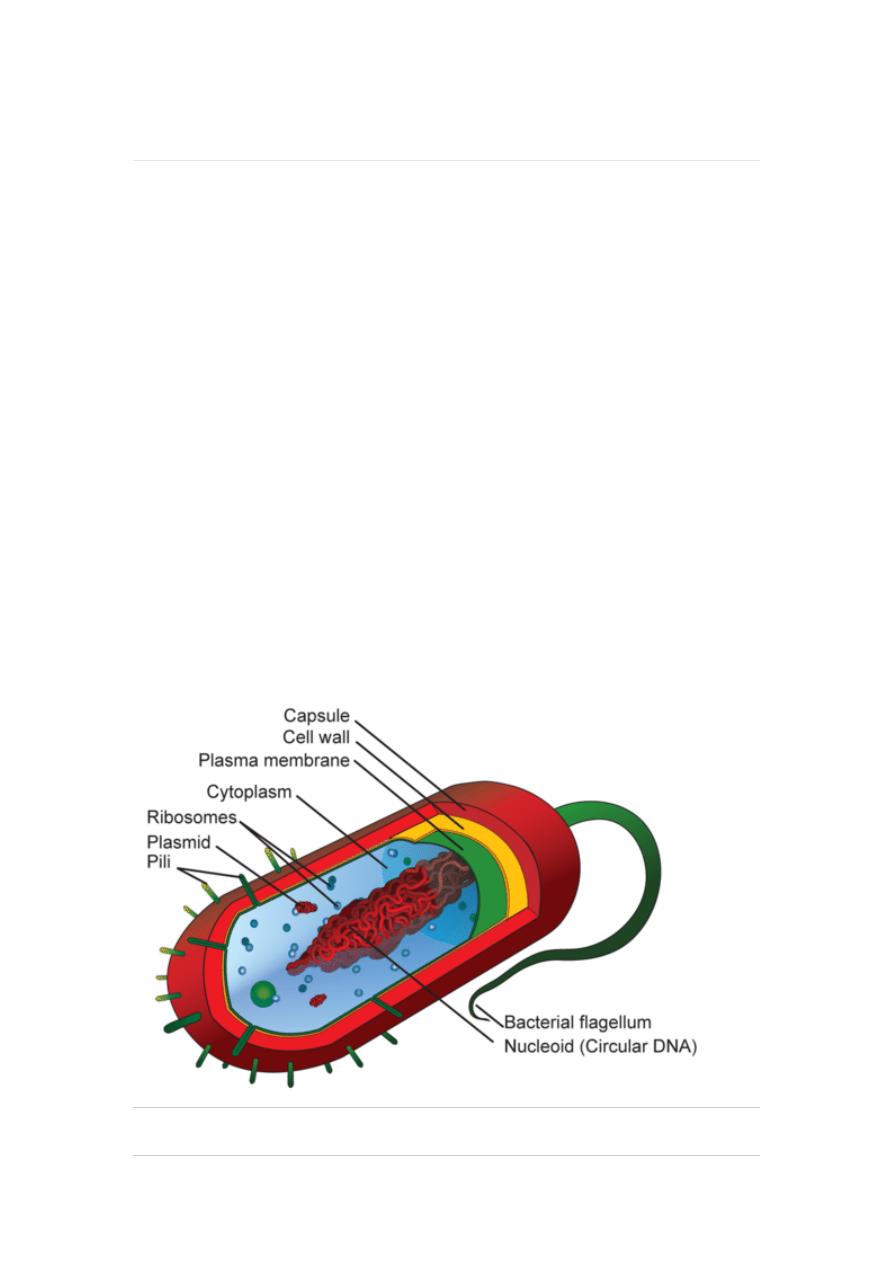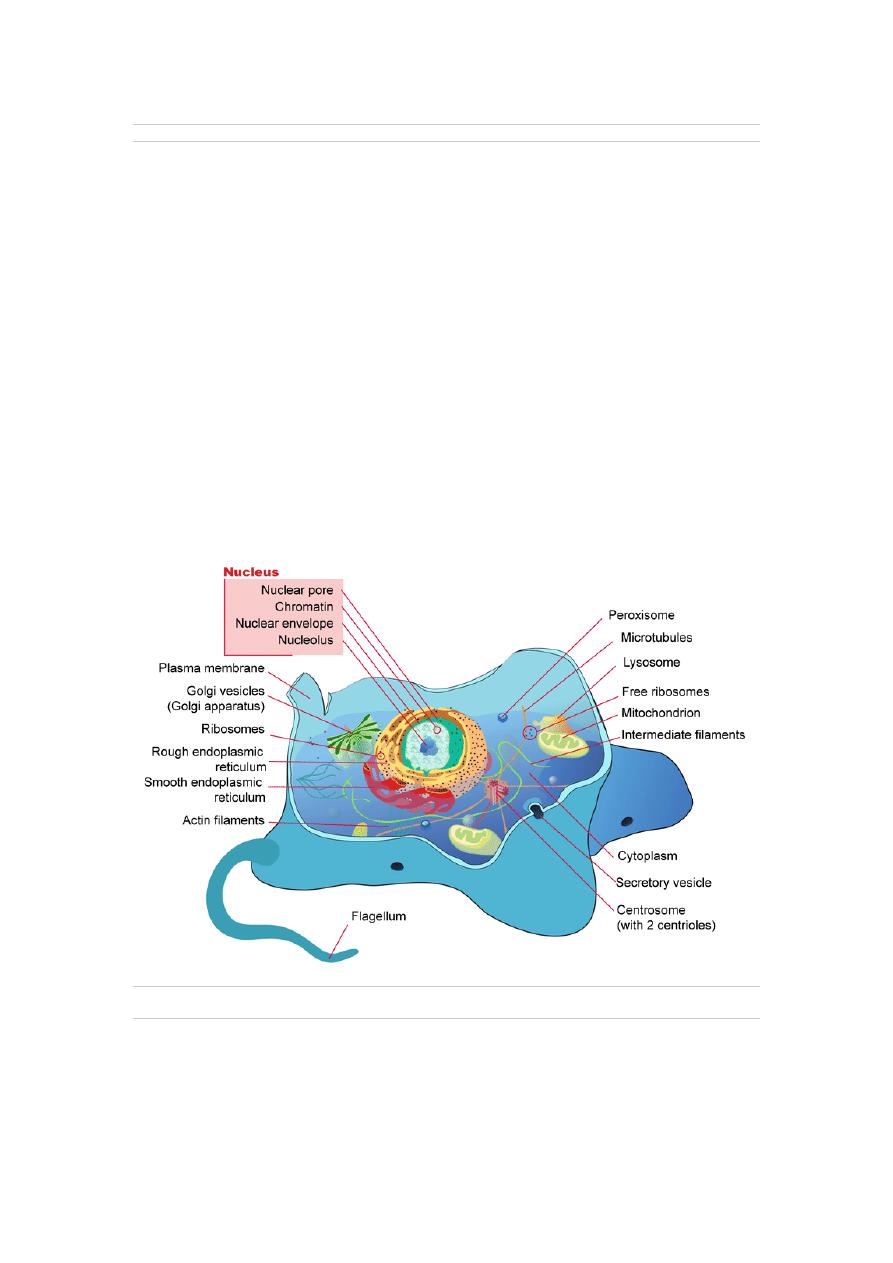
2
nd
lesson Biology
i
Prokaryotics and Eukaryotic Cells
Two Types of Cells
There is another basic cell structure that is present in many but not all
living cells: the nucleus. The nucleus of a cell is a structure in the
cytoplasm that is surrounded by a membrane (the nuclear membrane) and
contains, and protects, most of the cell's DNA. Based on whether they
have a nucleus, there are two basic types of cells: prokaryotic cells and
eukaryotic cells.
Prokaryotic Cells
Prokaryotic cells are cells without a nucleus. The DNA in prokaryotic
cells is in the cytoplasm rather than enclosed within a nuclear membrane.
Prokaryotic cells are found in single-celled organisms, such as bacteria.
Organisms with prokaryotic cells are called prokaryotes. They were the
first type of organisms to evolve and are still the most common organisms
today
.
Prokaryotic Cell. This diagram shows the structure of a typical prokaryotic cell, a bacterium. Like other
prokaryotic cells, this bacterial cell lacks a nucleus but has other cell parts, including a plasma membrane,
cytoplasm, ribosomes, and DNA. Identify each of these parts in the diagram.

2
nd
lesson Biology
ii
Eukaryotic Cells
Eukaryotic cells are cells that contain a nucleus. A typical eukaryotic
cell is shown in Figurebelow. Eukaryotic cells are usually larger than
prokaryotic cells, and they are found mainly in multicellular organisms.
Organisms with eukaryotic cells are called eukaryotes, and they range
from fungi to people.
Eukaryotic cells also contain other organelles besides the nucleus.
An organelle is a structure within the cytoplasm that performs a specific
job
in
the
cell. Organelles called
mitochondria,
for
example,
provide energy to
the
cell,
and
organelles
called
vacuoles
store substances in the cell.
Organelles allow eukaryotic cells to carry out more functions than
prokaryotic cells can. This allows eukaryotic cells to have greater cell
specificity
than
prokaryotic
cells. Ribosomes,
the
organelle
where proteins are made, are the only organelles in prokaryotic cells.
Eukaryotic Cell. Compare and contrast the eukaryotic cell shown here with the prokaryotic cell. What similarities
and differences do you see?

2
nd
lesson Biology
iii
Difference between Prokaryotic cell and Eukaryotic cell
Prokaryotic Cells
Eukaryotic Cells
They are very minute in size.
They are comparatively larger in size.
Nuclear region (nucleoid) is not enveloped by a
nuclear membrane.
Nucleus is surrounded by a double membrane
layer.
Single chrmosome present.
More than one chromosome are present.
Nucleolus is absent.
Nucleolus is present.
Membrane bound organelles are absent.
Membrane bound organelles are present.
Multiplication of cell is by fission or budding.
Cell division by mitosis or meiosis.
Cell Walls presnt, which are chemically complex.
Cell walls seen in only plant cells, which are
chemically simpler.
Cell type is usually unicellular.
Usually multicellular cells.
Cell size is 1-
10μm
Cell size 10 - 100µm.
Example: Bacteria, archaea
Example: animal cells and plant cells.
